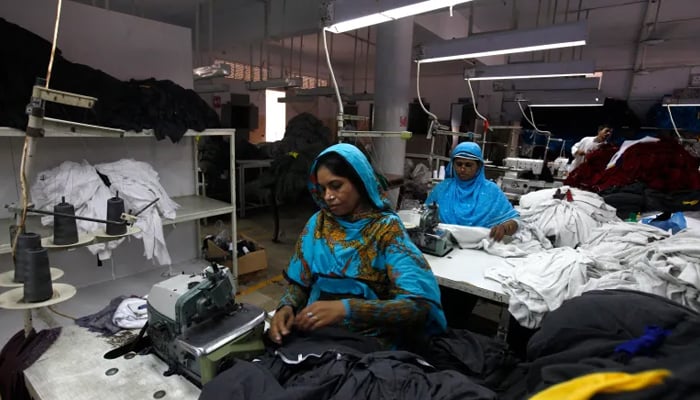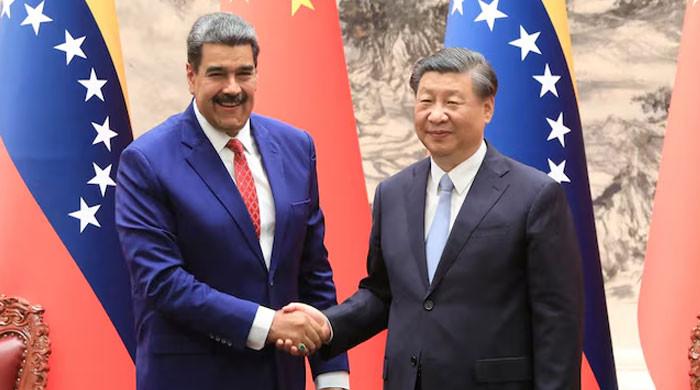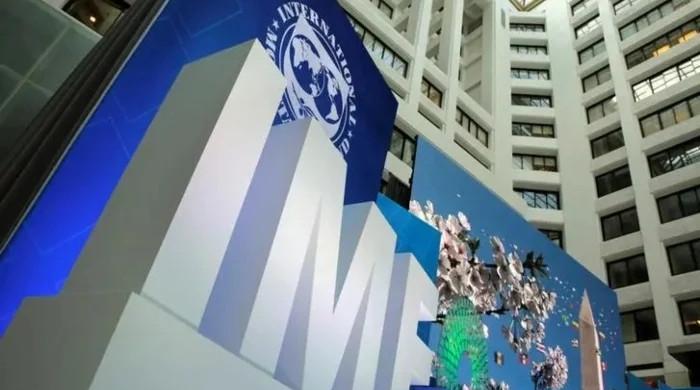Textiles: A dormant giant
Despite the textile sector's fundamental role in the economy, its position within Pakistan's economic strategy seems to be wavering
July 10, 2023

Pakistan, known as the fifth largest cotton producer worldwide and a major textile exporter, seems to be entrapped in a paradox of both potential and neglect.
While the sector contributes a staggering 57% to the country's exports and provides employment to a vast portion of the population, its steady decline over the past five years has been marked by a tangible lack of government and private sector interest.
Despite the textile sector's fundamental role in the economy, its position within the economic strategy of the country seems to be wavering. The Ministry of Textiles, the government body responsible for its administration and curating the industry, appears to have been in a virtual dormant state for the last half-decade.
This can be glaringly noticed in the outdated and obsolete data on their website, which has not been updated for years.
The ministry still prides itself on having Razzaq Dawood as its adviser, someone who has long gone from the policy arena. The last tender dates back to 2019, and the events and expos mentioned are relics of 2018-2019, casting a shadow on the department's lack of initiative.
This lethargy is not just limited to the government. The All Pakistan Textile Mills Association (APTMA), the body representing textile manufacturers in Pakistan, too, seems to be drifting, lacking vision and momentum to seize opportunities in the regional and global market space.
A visit to their website reveals that the latest industry insights are from 2021, suggesting a detachment from current global textile trends and developments.
Given the current scenario, the announcement made by Finance Minister Ishaq Dar, in his budget speech, about promoting the textile industry by abolishing the 5% regulatory duty on synthetic filament yarn, which is not produced locally, feels like a drop in the ocean.
The increase in GST on Tier-1 retailers of textiles and leather products from 12% to 15% appears more of a move to gain revenues, rather than a strategic plan to bolster the textile industry. Influencing the competitiveness of the high-end textile products being produced at home as compared to the similar products available to the consumer from the grey channels.
The Textiles and Apparel Policy 2020-25, launched by the Ministry of Commerce, promises to boost value-added exports and make Pakistan a major player in the global textile supply chain. However, the document is brimming with ambitious targets, but without a concrete action plan on how to achieve them. Telling the nation "what to do", while being muted about "how" to do it.
The statistics tell a worrying tale — the exports of textile products posted a growth of 12.8% year-on-year to $4.4 billion in 2017-18, while the 2022-23 figures by the Economic Survey of Pakistan show a negative growth of 16.03%. This trend is a stern warning that without immediate and strategic action, the industry is at risk of further decline.
To make matters worse, the global shift from natural to man-made fibers in both consumption and production patterns is an undeniable reality that the Pakistani textile industry is yet to acknowledge and adapt to. This signals an urgent need for an instrument of research and development that can guide the industry toward an innovation-centric sustainable textile model.
It is evident that the textile industry, one of the champions of Pakistan's economy, is sadly enmeshed in neglect and apathy from the authorities that ought to be its strongest allies. Without a doubt, a rejuvenated and focused approach toward this sector is the need of the hour. The potential is immense, but the will and vision must meet the understanding of the global shift in market dynamics and the innovation that can enable the possibilities.
In the face of the increasingly fluctuating global cotton market, the Pakistani cotton industry has showcased a relatively resilient performance.
The data for 2022/2023 indicates that cotton was grown in an area of 2.065 million hectares. This represents a slight decline from the 2.110 million hectares of the previous year. Despite the decrease in cultivation area, the yield per hectare stood at 404.61 kilograms, reflecting an improved yield compared to previous seasons.
Cotton production for 2022/2023 was recorded at 0.836 million tonnes. This figure shows a decline compared to the 1.265 million tonnes produced in the 2021/2022 season. The shift in production can be attributed to a variety of factors, including climate change effects, agricultural practices, and policy regulations.
Beginning stocks for the 2022/2023 season were 0.5 million tonnes, which when coupled with imports of 1 million tonnes, provided the cotton industry with a substantial volume for consumption and export. The total cotton consumption in Pakistan for the 2022/2023 season was high, reaching 1.9 million tonnes.
Despite the considerable consumption, Pakistan managed to export 0.009 million tonnes of cotton in the 2022/2023 season, slightly above the previous year's export volume. By the end of the 2022/2023 season, ending stocks were at 0.427 million tonnes. The stocks-to-use ratio, a key indicator of market tightness, was recorded at 0.22 for the 2022/2023 season, suggesting a balance in the supply and demand scenario for the Pakistani cotton industry.
Despite the fluctuating figures and the challenges faced by the cotton industry, Pakistan is a major player in the global cotton market. However, the global shift in standards and production techniques is changing the global landscape of textiles.
Pakistan needs to focus more on exploring new markets, increasing yield per hectare, and innovation to improve its share to be part of the global value and supply chain.
The statistics provide a comprehensive overview of the industry, but it is important to remember that the sector's performance is influenced by numerous variables, both domestic and global. The resilience and potential of Pakistan's cotton industry offer a promising future, given the right realisations, interventions, and policy support.
The establishment of a Sustainable Textile Innovation Council (STIC) in Pakistan could be the catalyst needed to drive the industry toward a more sustainable and competitive future.
Not only would this align Pakistan's textile industry with global trends, but it would also unlock economic benefits, enhance social well-being, and safeguard the environment.
The mandate of the STIC will be different from the All-Pakistan Textile Mills Association (APTMA), the value proposition and policy focus would also differ in objectives and outcomes.
In the fast-paced world of industry moving ahead with artificial intelligence and automation, the line between success and failure can be drawn by a simple choice: to embrace innovation and change or remain stagnant in comfort zones, leading to a slow and gradual demise.
Nowhere is this decision more critical than in the dynamic textile industry, where the winds of change constantly blow. To survive and thrive, textile businesses must wholeheartedly embrace innovation, break free from their traditional boundaries, and venture into uncharted territories.
To avoid a slow and gradual demise, textile businesses must foster a culture of innovation. Encouraging creativity, empowering employees, and seeking collaborations with startups and research institutions can inject fresh perspectives and ideas. Embracing a mindset of continuous improvement, where even the smallest of changes are seen as stepping stones towards progress, can fuel the industry's journey towards a brighter future.
Amir Jahangir is a global competitiveness, risk, and development expert. He can be reached at [email protected] and tweets at @amirjahangir











